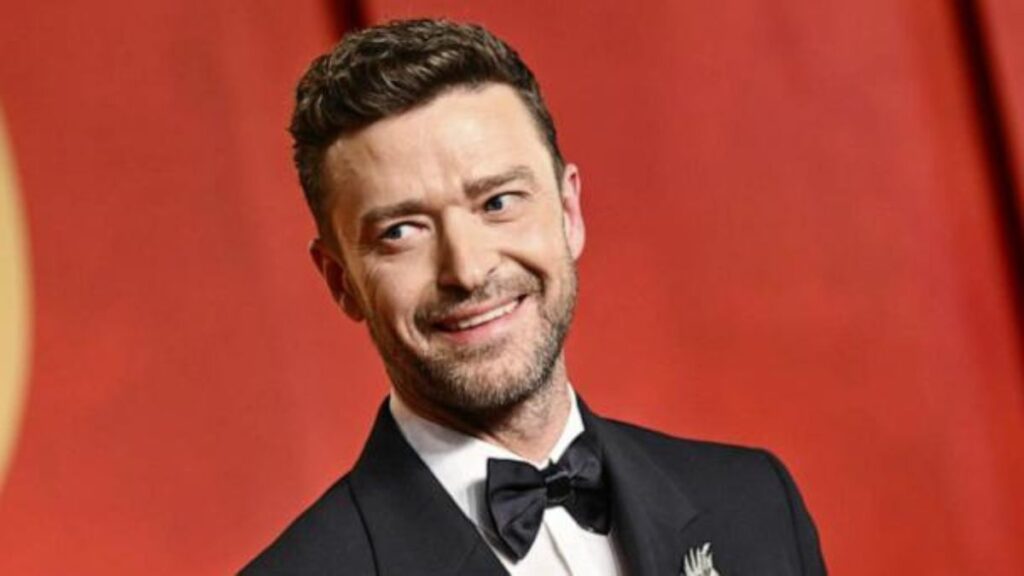I. THE CLEAN-CUT ICON IN A TOXIC WORLD
Justin Timberlake once strode through the cultural zeitgeist like a man who knew all the right moves. From his squeaky-clean days on Disney’s The Mickey Mouse Club to his seismic solo rise in the early 2000s, Timberlake played the game of fame with masterful choreography. Boy band heartthrob? Check. Super Bowl showman? Check. Hollywood actor with Oscar ambitions? Double check. But in the meticulously curated world of pop idols, even a whiff of something unsavory—like toxicology—can trigger a landslide.
The phrase “Justin Timberlake toxicology” reads like tabloid catnip—an odd juxtaposition of a once-golden image with the scientific forensic term more often tied to scandal than songwriting. But to understand why this phrase resonates, and why it’s become a trending search term, we must unpack both the literal and metaphorical poisons swirling around Timberlake’s legacy.
This is a biography with a chemical twist.
II. EARLY LIFE & RISE: INNOCENCE DISTILLED
Born January 31, 1981, in Memphis, Tennessee, Justin Randall Timberlake grew up in a musical household. The son of a Baptist church choir director, music was as intrinsic to his identity as oxygen. His earliest influences—Al Green, Stevie Wonder, and Donny Hathaway—would later reappear, repackaged in sleek R&B-pop hybrids that defined a generation.
He joined The Mickey Mouse Club in 1993 alongside future megastars Britney Spears, Christina Aguilera, and Ryan Gosling. This wasn’t just child acting; it was star incubation. Here, Timberlake began developing his core compound: charisma with undertones of ambition.
By 1995, he was fronting the now-legendary *NSYNC, a boy band that fused European pop aesthetics with American flash. Timberlake wasn’t just another pretty face in a choreographed lineup—he had “frontman chemistry.” With hits like “Bye Bye Bye” and “It’s Gonna Be Me,” *NSYNC conquered MTV and every tween bedroom in America.
But Timberlake wasn’t designed to be part of a blend. He was engineered to stand alone.
III. SOLO SUCCESS: THE MOLECULAR BREAKDOWN
In 2002, he launched his solo career with Justified—a critically lauded debut that proved he wasn’t just a falsetto riding the boy band wave. Tracks like “Cry Me a River” and “Rock Your Body” were sleek, addictive, and daringly produced by Pharrell Williams and Timbaland. Timberlake’s new sound was filtered through funk, seduction, and high-concept pop.
He embodied the 2000s’ version of Michael Jackson, sans the controversy—until he didn’t.
At the 2004 Super Bowl halftime show, Timberlake’s infamous performance with Janet Jackson resulted in a “wardrobe malfunction” that revealed Jackson’s breast on live television. The fallout was swift and uneven. Jackson bore the brunt. Timberlake skated, relatively untouched. The toxicology of that moment—how it affected two Black and white artists differently—would follow him for decades.
IV. THE BRITNEY FACTOR: POISONOUS PERCEPTION
You can’t write about Justin Timberlake without the Britney Spears chapter. Their early-2000s romance was America’s golden couple fantasy, punctuated by matching denim outfits and TRL appearances. But their breakup—presumably catalyzed by infidelity on Spears’ part, as Timberlake alluded to in “Cry Me a River”—marked a dramatic shift in public sympathy.
Recent re-evaluations of the Britney saga (most notably in the 2021 documentary Framing Britney Spears) have recast Timberlake’s role in a harsher light. Once seen as the heartbroken ex, he’s now part of a larger system that villainized Spears while boosting his own image.
“Toxicology,” in this context, becomes metaphorical. What poisons the narrative of a pop star? Who profits when someone else falls?
V. TOXICOLOGY IN THE HEADLINES: THE 2024 INCIDENT
The phrase “Justin Timberlake toxicology” surged into public consciousness again in late 2024 when unconfirmed reports circulated involving an alleged DUI stop in Los Angeles. The media, hungry for a fall-from-grace headline, latched on. Paparazzi photos showed Timberlake leaving a bar in West Hollywood. Anonymous law enforcement sources whispered about “possible substances involved.”
Nothing was officially confirmed, and Timberlake’s camp denied any wrongdoing. Yet the rumor mill ground on, buoyed by phrases like “toxicology screen pending” and “blood alcohol content.” No charges were ever filed. But the damage—like a chemical trace—lingered in search trends and Reddit threads.
Why the fixation?
Because the once-golden boy of pop, now approaching midlife, is undergoing a public reconstitution. And like any chemical rebalancing, it involves heat, pressure, and exposure.
VI. CHEMISTRY VS CHARACTER: THE SPLIT IN BRAND TIMBERLAKE
By the mid-2010s, Timberlake had become a brand as much as an artist. Albums like The 20/20 Experience and ventures into acting (see: The Social Network, Inside Llewyn Davis) expanded his image into something more refined—less pop, more prestige.
But fame, like pharmacology, has a half-life. Public perception began to change.
His 2018 album Man of the Woods was a critical disappointment, mocked for its attempt to marry earthy Americana with slick pop production. It felt like Timberlake was cosplaying authenticity. The backlash wasn’t just musical—it was moral. Suddenly, every questionable moment in his past was magnified: the Janet debacle, the Britney breakup, even old interviews where he made offhand jokes at others’ expense.
He was no longer immune.
VII. PUBLIC APOLOGIES & THE ERA OF RECKONING
In 2021, Timberlake issued a public apology on Instagram following renewed criticism of his behavior toward Spears and Jackson. It read, in part:
“I’ve seen the messages, tags, comments, and concerns, and I want to respond. I am deeply sorry…”
It was a carefully crafted statement—contrite but corporate. Critics said it came too late. Fans of Spears and Jackson felt it was performative, a detox attempt after decades of toxicity had already permeated the cultural bloodstream.
Yet others argued that holding Timberlake to account was necessary. After all, in today’s age of celebrity forensic analysis, even emotional residues are fair game.
VIII. WHAT “TOXICOLOGY” REALLY MEANS IN CELEBRITY
Let’s be clear: there is no public evidence of Justin Timberlake being under the influence of drugs or alcohol during the alleged 2024 incident. No formal toxicology report has been released. The word is floating—an ambient keyword in the collective mind, more symbolic than scientific.
But its relevance lies in what it suggests about fame. In the celebrity ecosystem, “toxicology” doesn’t just refer to the substances in your blood—it’s the subtext in your brand. It’s the bitter aftermath of public scrutiny. The societal hunger to test, trace, and expose.
Timberlake’s name attached to “toxicology” reveals a deeper truth: even the cleanest reputations can be contaminated by time, silence, or missteps—especially in a digital world where receipts never expire.
IX. TODAY: THE MAN IN THE MICROSCOPE
In 2025, Timberlake remains an A-lister, albeit one with a cloudier aura. His return to touring has been successful, though not without protest. Activists have picketed venues. Some fans cheer, others boo. Social media is a minefield of TikTok breakdowns and Twitter hot takes.
He’s reportedly working on a memoir—one that insiders claim will address “the difficult parts.”
And maybe that’s the final lesson from the keyword “Justin Timberlake toxicology.” It’s not about scandal. It’s about synthesis. Reconciling the person with the public. The image with the impact. The stardust with the scrutiny.
X. THE FINAL COMPOUND: LEGACY
Timberlake’s legacy is neither pure nor poisonous. Like any complex molecule, it defies simplification. He brought joy to millions. He made mistakes. He profited from systems that marginalized others. He tried to make amends.
Whether you view “Justin Timberlake toxicology” as a literal headline or a symbolic reckoning, one thing is certain: his story isn’t over. It’s just reacting to new elements.
And in the lab of fame, reactions are inevitable.






